This copy of Cloudspire was provided by Chip Theory Games for review purposes and we want to thank them for passing it along.
 The first time I played Cloudspire I felt overwhelmed, spoiled with options, and bewildered by the uncertainty of the countless paths ahead of me. Each avenue seemed filled with so many ways it could go wrong.
The first time I played Cloudspire I felt overwhelmed, spoiled with options, and bewildered by the uncertainty of the countless paths ahead of me. Each avenue seemed filled with so many ways it could go wrong.
Looking back now, I had no idea the level of the complexity I was getting into with Cloudspire. The more I learned about it, the more I understood I had barely scratched the surface of what I would see in the following months of playing it. At times it felt tedious having to stop and consult the rulebook so often throughout, but thankfully, Cloudspire has enough tension and interesting moments to help make it a little easier to forgive those obstacles, and it kept reeling me back in.
ARTWORK AND COMPONENTS
 When I opened the Cloudspire box for the first time, I remember being floored by almost everything inside, from the neoprene isles and fortresses to the high quality chips of various designs and uses. The production quality here is truly in a league of its own. It also helps that the game stores nicely in the box and is relatively quick to set up for such a big game.
When I opened the Cloudspire box for the first time, I remember being floored by almost everything inside, from the neoprene isles and fortresses to the high quality chips of various designs and uses. The production quality here is truly in a league of its own. It also helps that the game stores nicely in the box and is relatively quick to set up for such a big game.
The production quality here is truly in a league of its own.
Stacking your chips up for each unit with their health is satisfying, and it feels great watching battles unfold as units lose health, minions die and ungroup, and heroes get promoted to their other side. Being able to see the exact stats of all spires on the map by the colour of the chips is brilliant. Aside from the odd keyword on some spires, most of them straightforward, it’s easy to know exactly what they can all do from across the table, and the components do a fantastic job here. The hero and minion chips ask a lot more of you, as the health chips and the odd upgrade or market chip will be easy to spot without getting close, but the actual stats of those units will only be displayed on the chip itself at the top of the stack.

It’s a real shame Cloudspire doesn’t come with player aids. There’s an overwhelming amount of stuff to remember in this game, even after you’ve played it many times, and I think some sort of player aid would’ve helped a lot. The back of the rulebook has a nice reference sheet, and even having a few of those would have gone a long way. I would’ve also appreciated maybe adding in additional copies of faction reference sheets, or shorter faction recaps for each player so you wouldn’t have to keep asking your opponents what their talents mean. Really, anything to make a game this complex more accessible would’ve been a welcome addition.
DESIGN
 Cloudspire offers a staggering amount to explore. I was continually impressed by how different my experience felt every single time I played, even when I played as the same faction over and over during the solo campaign. Based on the unique capabilities of each of the four factions, a highly variable map, and a whole slew of other mechanics to change it up, you really feel that sense of being able to go in almost any direction. In many ways, this works wonderfully. In some ways, it hampers the gameplay.
Cloudspire offers a staggering amount to explore. I was continually impressed by how different my experience felt every single time I played, even when I played as the same faction over and over during the solo campaign. Based on the unique capabilities of each of the four factions, a highly variable map, and a whole slew of other mechanics to change it up, you really feel that sense of being able to go in almost any direction. In many ways, this works wonderfully. In some ways, it hampers the gameplay.
Cloudspire offers a staggering amount to explore.
Back to the factions; they’re one of my favourite aspects of Cloudspire. Getting to know the ins and outs of each faction’s units, promoted sides, fortress advancements, and how their heroes can be effective, is a major part of what makes Cloudspire great. Each faction stands out, and each player needs to know how to play as their own specific faction while also knowing how to play against others. The second your opponent knows something you don’t about how to exploit an ability of theirs, you’re at a disadvantage. As you learn the game and play more, you’re bound to see new things you didn’t know could happen, and see battles and entire waves take place in ways you never previously imagined.
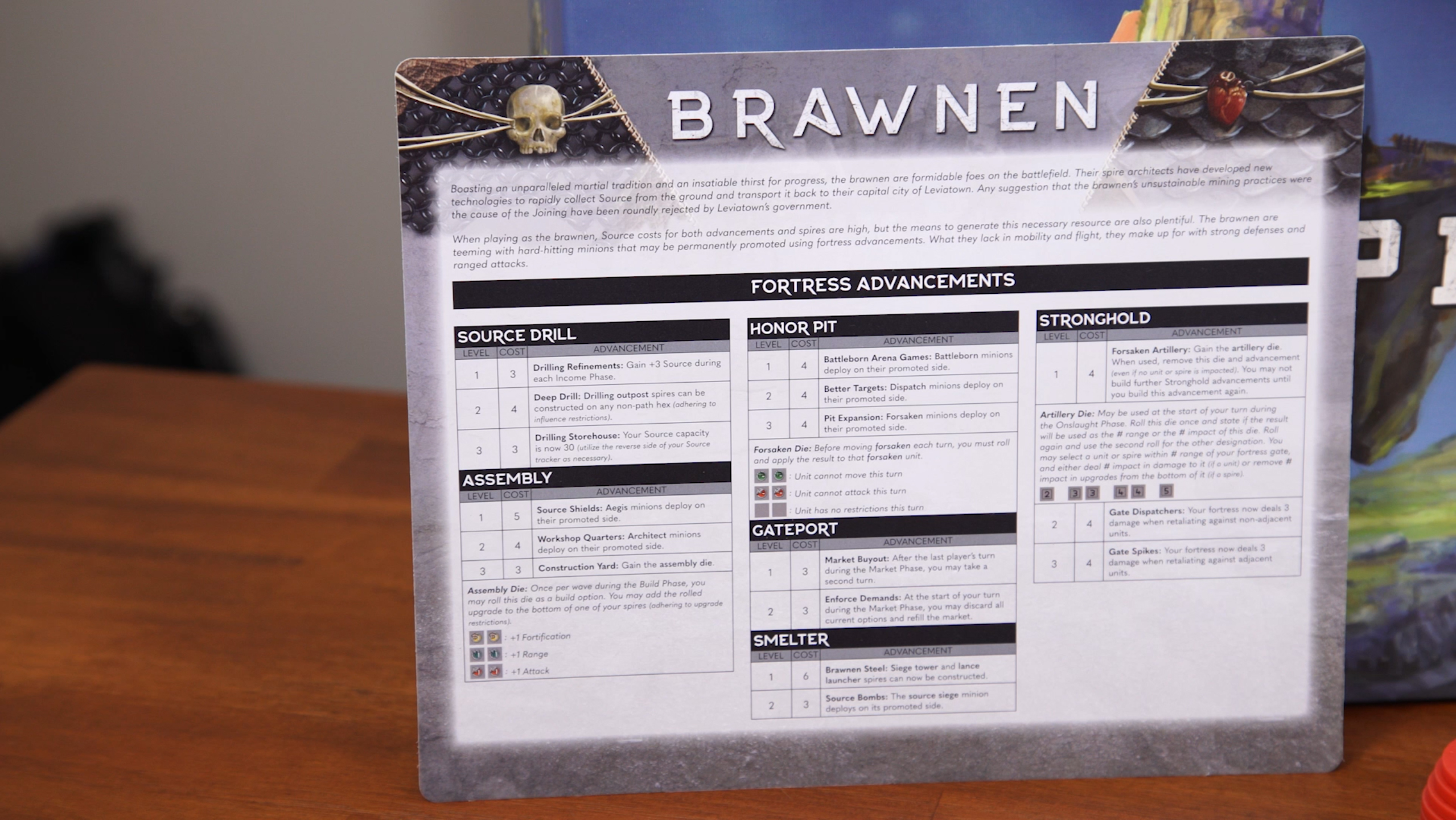
Each game of Cloudspire presents a new series of puzzles to solve and challenges to overcome. The complexity and slight freedom of minion movement means a lot of time is spent manipulating your minions and counting out hexes to ensure you don’t move too far into range of opposing spires too early, or hold back too much when you might want the logjam of units to meet further up the battlefield. At times it can feel like the only way to avoid analysis paralysis in a game like this is to just say: whatever, let’s just pick this and this and we’ll try it out and see how it goes! In shorter games, I don’t mind that degree of randomness and uncertainty. For me, though, Cloudspire has more of it than I’d like.
The event cards might play the biggest part of all in terms of randomness, and they’re my least favourite part of the game. They’re not all bad, but the majority of them make me feel as though my sense of agency is being removed, or at least trivialized to some degree. I can make a plan in one wave about how I’ll spend my Source and what I’ll start building towards, and then suddenly an event card might reveal a circumstance that makes all my planning entirely irrelevant. Cloudspire already has so much variety to offer and the factions are already interesting enough on their own, I didn’t feel like the events added anything positive, only further unneeded chaos.
The relic cards, while not as bad, also vary more than I’d like. I wasn’t the only player to lose health fighting a landmark minion, only to see that my relic reward was of no use to me. Since these were often optional to pursue, they didn’t bother me, and I did enjoy playing some of the relics when the reward felt fair.
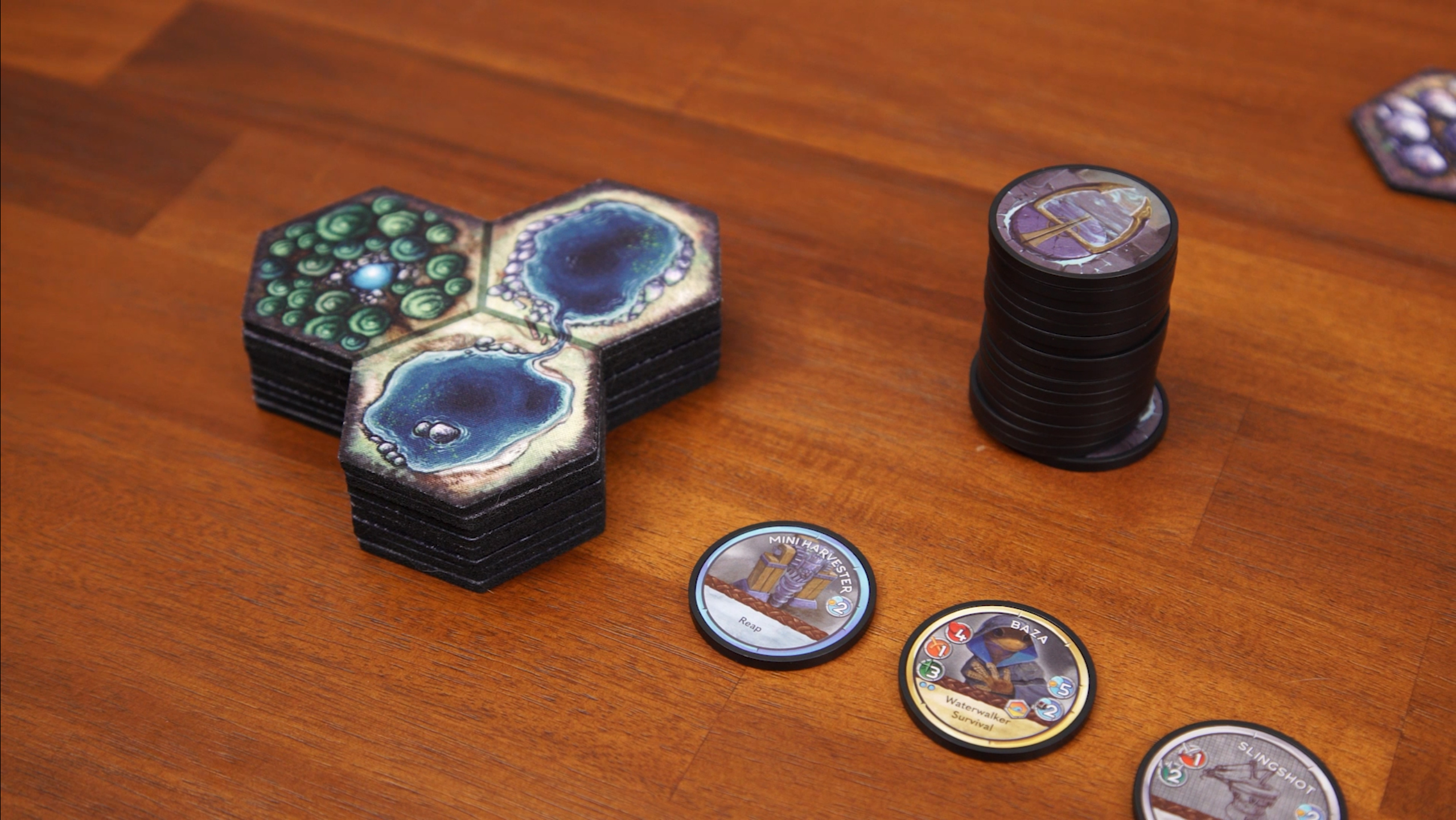
The market is interesting in theory, but to a lesser degree than the event cards, I just wonder if the market was really necessary or if it overcomplicates the game in a way it didn’t need. I really enjoy planning how to spend my Source and CP each wave, going through those Build and Prep phases, trying to figure out how it’ll all come together during the Onslaught phase, but I feel like having the Market phase right before all that just further limits how much you can spend on building your own spires and fortress advancements. I wouldn’t say the market’s a problem, but I think I would’ve preferred Cloudspire without it.
So, does this feel like a MOBA game or a tower defense game? I haven’t played many tower defense games, but I’ve played plenty of Heroes of the Storm and I used to play a bit of League of Legends many years ago. Cloudspire captures some elements of each of those genres while maintaining its own identity. Heroes feel weaker and more fragile than in MOBAs I’ve played, but the minions feel much stronger and more important. Spires play a massive part in Cloudspire, as do the landmarks. Inevitably, since this is a tabletop game, it feels much slower and more mechanical than a MOBA. It feels like more of a puzzle and a series of calculations or decisions that make up a more expansive, long-term strategy. You still need to be flexible and make important tactical decisions, but the game definitely encourages you to form more long-term plans and pick a specific direction in which to invest your resources.
FUN FACTOR
Your experience with Cloudspire will depend on how well you know the game, the people you play it with, and how much of your time you’re willing to invest. If you feel good about all three of those, you’ll probably love it.
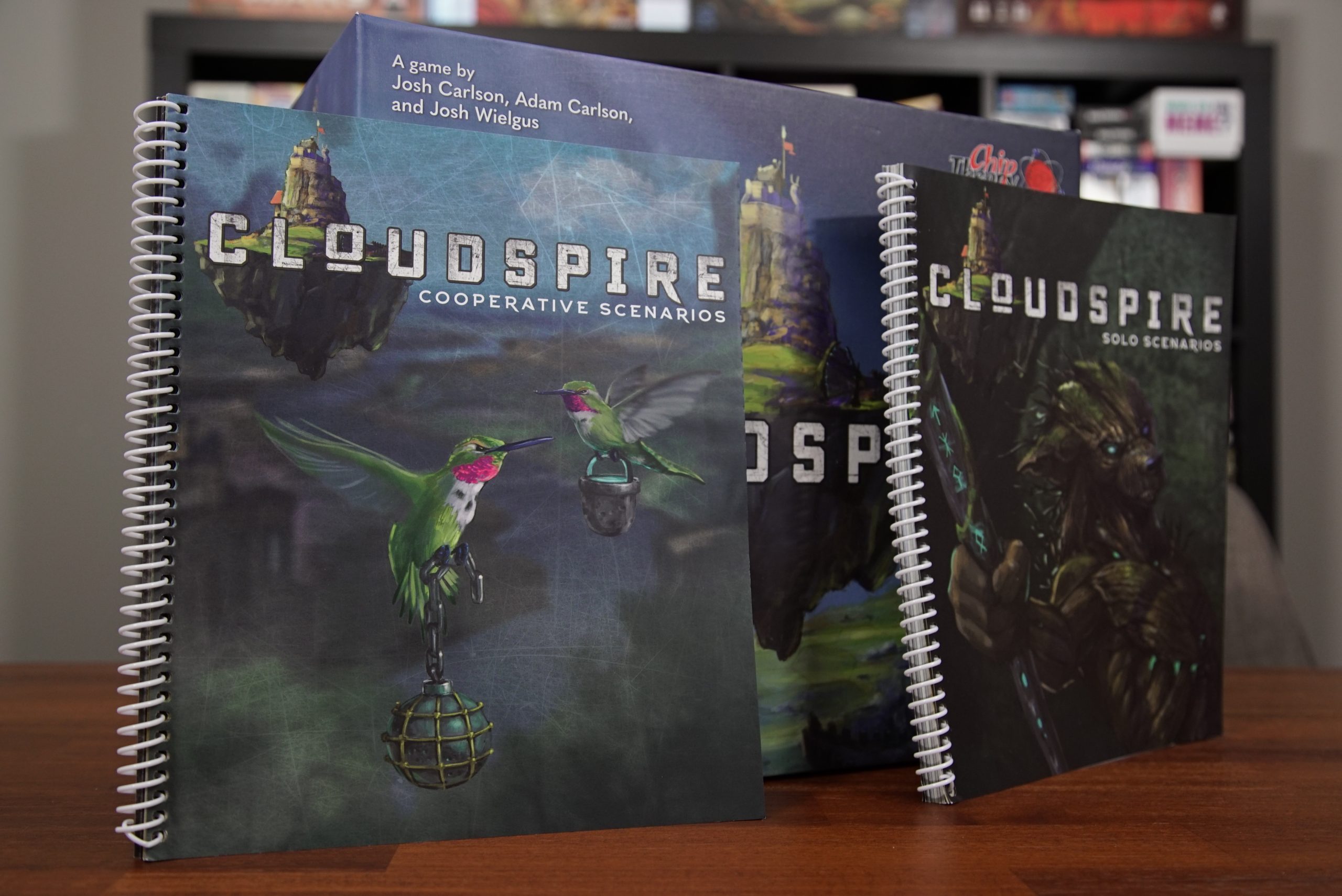 The most fun I had was playing the solo mode. Not only could I jump in and out of playing the game whenever I wanted, making it easy to take breaks or take my time analyzing my options, but the solo campaign offered new map setups and scenarios that reminded me of the solo campaign of the PC game, Warcraft 3. It presents unique challenges, forcing you to learn all about the different units and abilities of each faction, as well as the intricacies of timing, spire construction and placement, and so much more. There’s even a built-in reward system that leads to some carryover between scenarios, where the end of one scenario will determine how the next one is set up from the start, and you can even use your rewards to unlock special one-time abilities to help you in future scenarios. The solo mode almost feels like its own game.
The most fun I had was playing the solo mode. Not only could I jump in and out of playing the game whenever I wanted, making it easy to take breaks or take my time analyzing my options, but the solo campaign offered new map setups and scenarios that reminded me of the solo campaign of the PC game, Warcraft 3. It presents unique challenges, forcing you to learn all about the different units and abilities of each faction, as well as the intricacies of timing, spire construction and placement, and so much more. There’s even a built-in reward system that leads to some carryover between scenarios, where the end of one scenario will determine how the next one is set up from the start, and you can even use your rewards to unlock special one-time abilities to help you in future scenarios. The solo mode almost feels like its own game.
With two players, Cloudspire was still a lot of fun. Even with two of us being new at first, despite the game going much longer than we expected, we really enjoyed playing and wanted to play more, but our brains also felt like they had melted after just one game. The number of available calculations and possibilities to consider in Cloudspire is unfathomable to me, even just in each individual wave of play. You’ll probably experience a lot of downtime in your first few games, and while that certainly improves with repeated plays, it never fully goes away. With a third player, Cloudspire still felt playable, but I definitely enjoyed it less than as a two-player game.
You’ll probably experience a lot of downtime in your first few games, and while that certainly improves with repeated plays, it never fully goes away.

If you can handle the randomness, stick it out through the almost brutal learning curve, and deal with the downtime that comes with rules clarifications and reminders until you know the game well enough to have it flow smoothly, you’ll be amazed by what Cloudspire has to offer. After that, it comes down to how much you want to explore all the game modes, and how often you can get it to the table with other experienced players.
After playing it with two and three players, as well as nearly half the solo campaign, there are still so many little nooks and crannies I have yet to explore. I haven’t even tried the solo endless mode or the cooperative mode, nor have I tried the four-player team (2v2) mode, but I’m not sure that last mode will ever appeal to me. I would need to know the game much better before having any desire to add more players. As it is, you have to be in a specific mood and setting to play Cloudspire, and any additional players only risk slowing the game down even more, unless everyone really knows what they’re doing.
VALUE
The production in Cloudspire is second to none, but this is more expensive than most people are comfortable spending on a single game. So the value of Cloudspire undoubtedly hinges on what you’re buying it for and how much you expect to play.
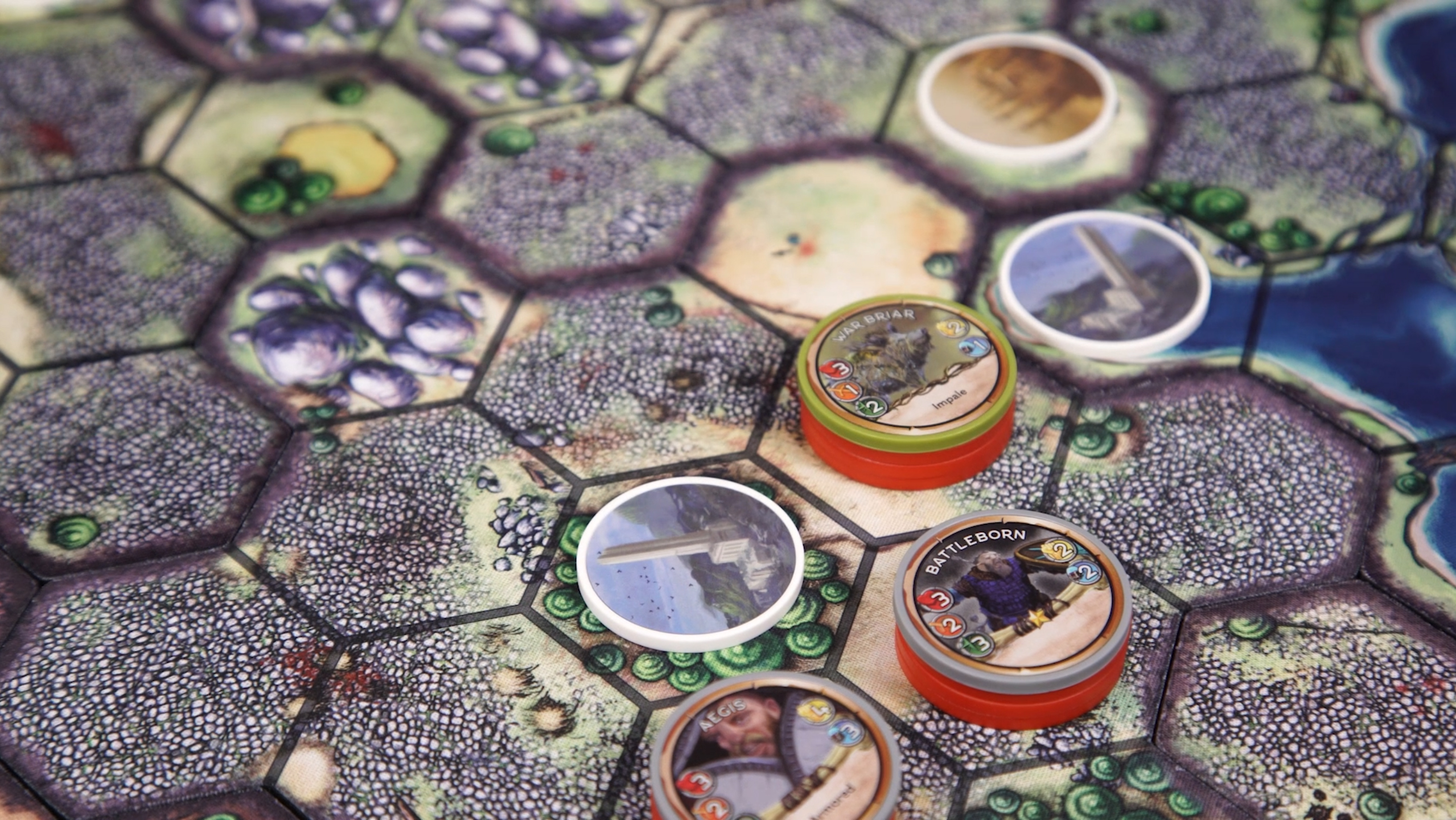
If you’re looking for a game to really dig into with a friend or two over numerous sessions and learn the ins and outs despite some complications, this is right up your alley. If you like your games to have high quality components that enhance the tactile and, as a result, overall game experience, Cloudspire absolutely nails that. If you like the game, you’ll get more than full value out of this. Even playing on a weekly basis, Cloudspire could keep you busy for years. The amount of content in the box is truly astounding. If you buy this thinking it would be cool to play it casually and just have it on the shelf as another option for game night, I’d say that would be a mistake.
Even though I really appreciate the quality of its overall production, I can’t help but feel like more people would be able to justify the purchase and give this game a shot if the cost was lower. I’m not saying the price isn’t fair, because it is, but if the components had been lower quality and the game could’ve been priced cheaper, I wonder how much (or little) the gameplay would suffer in order to make this reach a price point where more people would give it a shot.
VERDICT
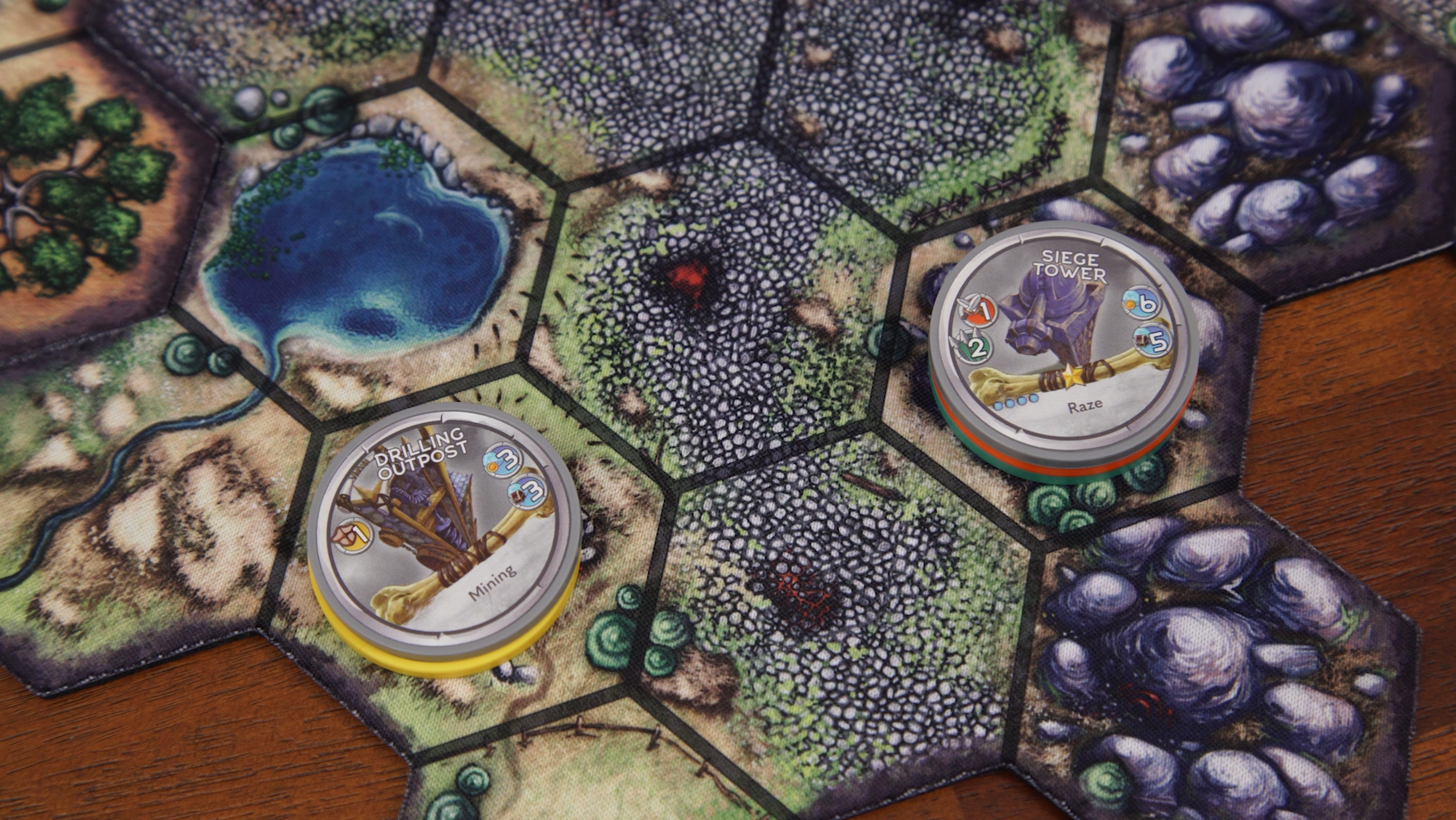 There’s no denying the vastness and endless possibilities of Cloudspire. Each time you play, you’re in for a truly different experience. More than most games I’ve played, though, Cloudspire really is a niche game that won’t be for a lot of people. The learning curve is among the highest of any game I’ve played, and you’ll spend more time than you’d like reading about what keywords mean and asking your opponent to clarify how their faction talents work. If you can get past those hurdles and power ahead, you’re in for a real treat. The further you dive into Cloudspire, the more it rewards you in ways a lot of other games won’t. It even makes you feel like a genius sometimes.
There’s no denying the vastness and endless possibilities of Cloudspire. Each time you play, you’re in for a truly different experience. More than most games I’ve played, though, Cloudspire really is a niche game that won’t be for a lot of people. The learning curve is among the highest of any game I’ve played, and you’ll spend more time than you’d like reading about what keywords mean and asking your opponent to clarify how their faction talents work. If you can get past those hurdles and power ahead, you’re in for a real treat. The further you dive into Cloudspire, the more it rewards you in ways a lot of other games won’t. It even makes you feel like a genius sometimes.
In many ways, Cloudspire is unlike any tabletop game I’ve ever played. The level of investment required is steep but it’s also tremendously rewarding to see your plans come to fruition more and more as you understand the game. It doesn’t always flow as smoothly as I’d like, but when it pays off, it pays off in a big way. I just wish it paid off more often and with fewer roadblocks.
Pros
- Endlessly deep gameplay with multiple modes
- Top-notch production quality
- Rich and rewarding solo campaign
- Unique factions with highly asymmetric styles
- Infinitely replayable
Cons
- Unforgiving learning curve
- Excessive downtime with rules and keywords
- Lack of much-needed player aids
- Too much randomness and unpredictability
Leave a reply
You must be logged in to post a comment.



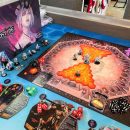

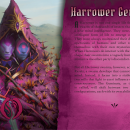

Gloomhaven: Triforce Class Guide
Gloomhaven: Triforce Class Guide
Men at Work – Review